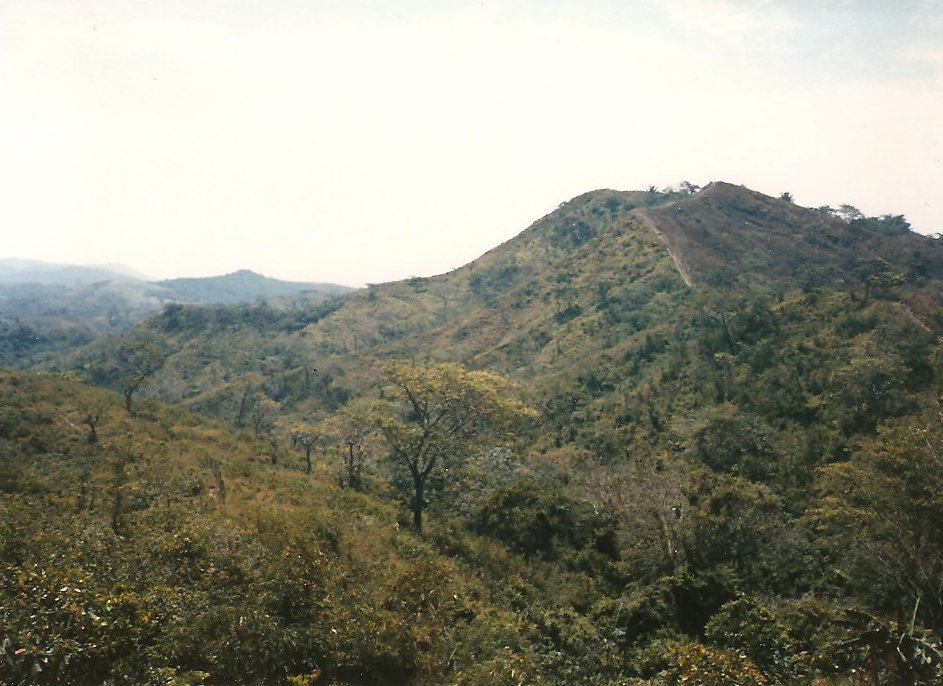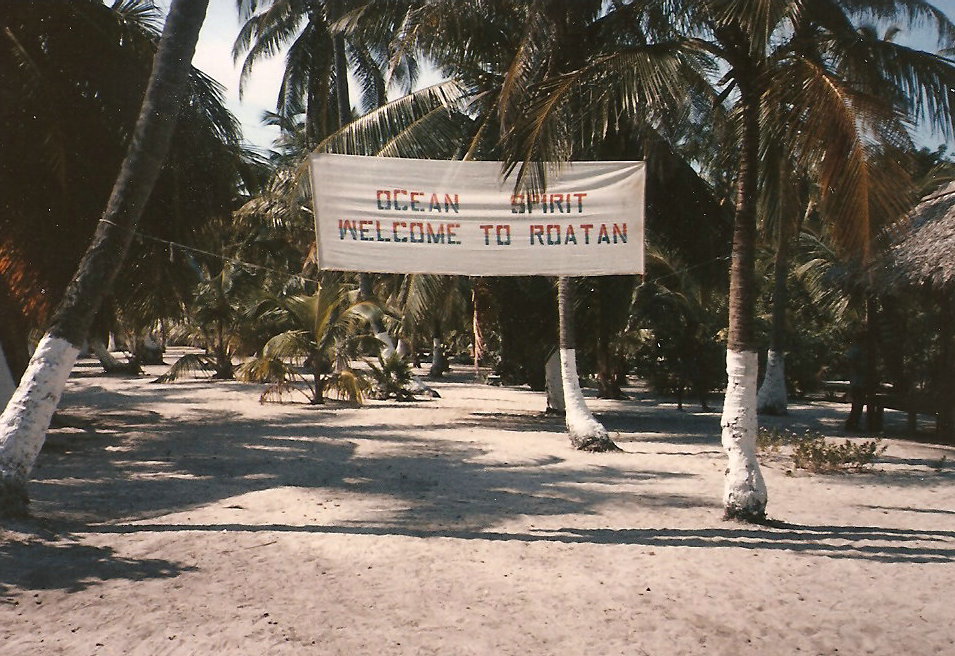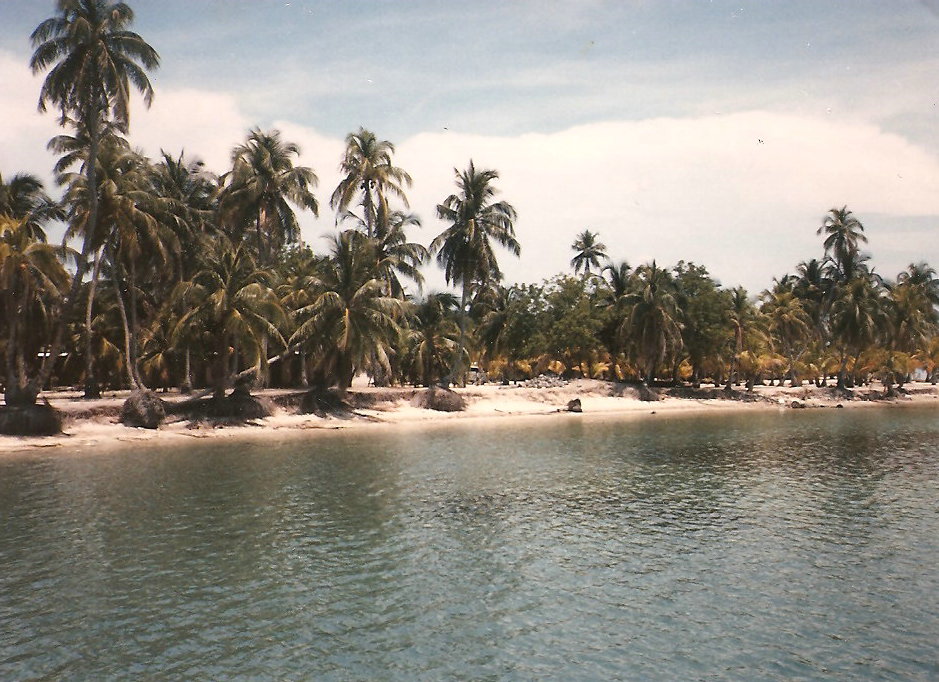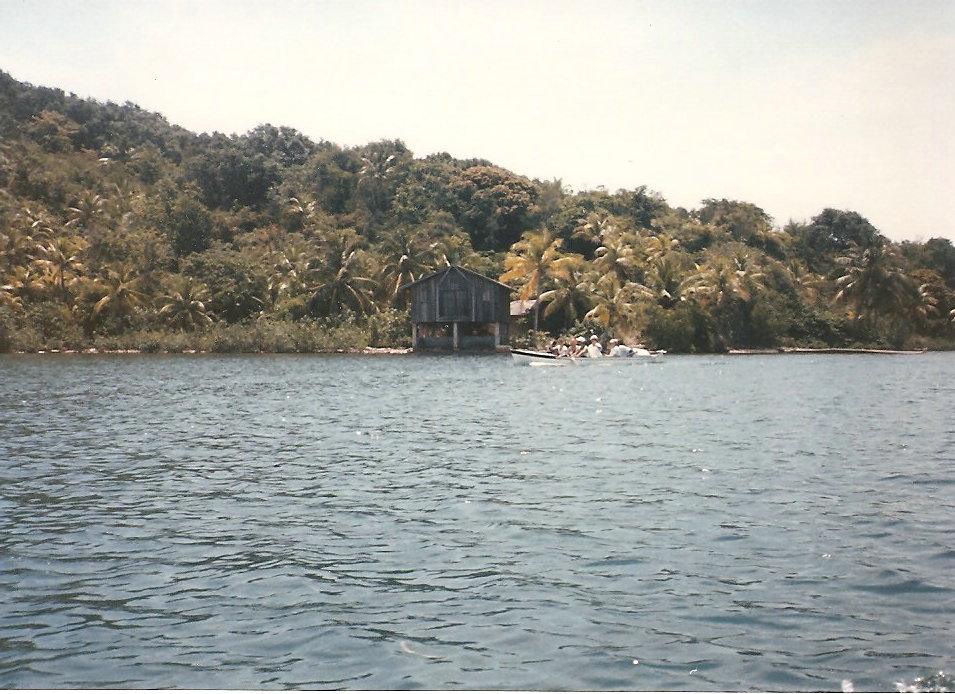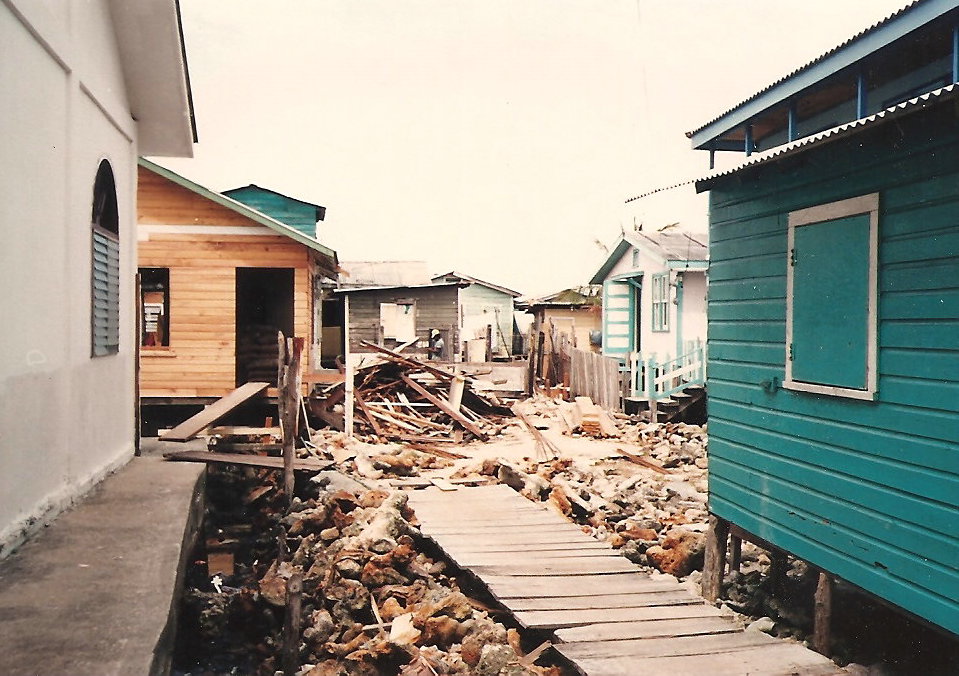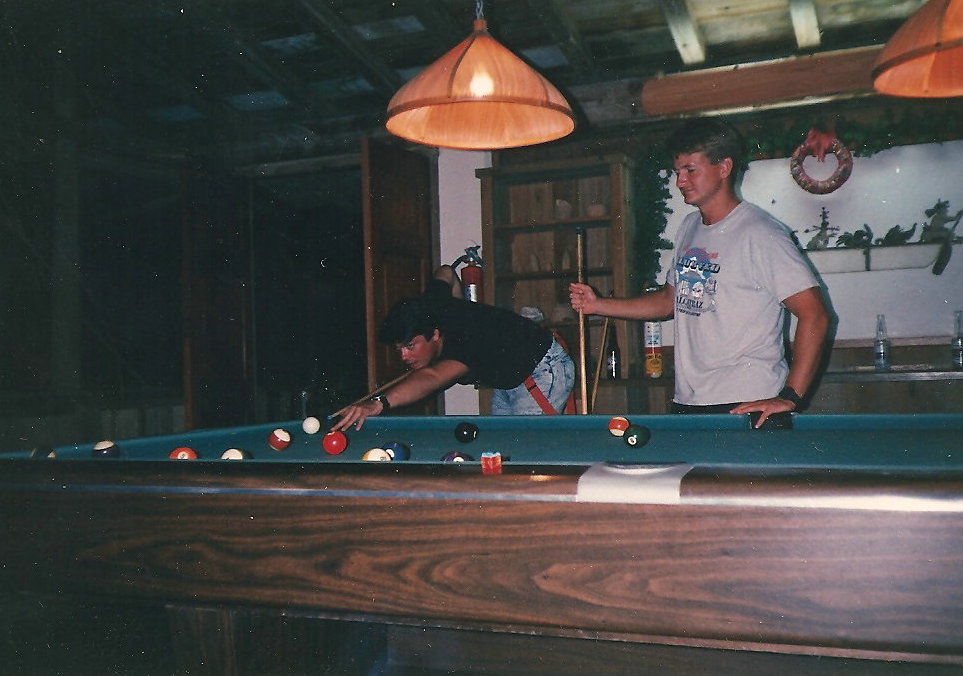I can still remember the first time I visited Honduras, I was working for the cruise lines in the 1990s. I was amazed at the pure, untouched landscape with endless views of the country’s hills and valleys. Honduras was not yet an established cruise ship stop and became a popular port of call because of its uninhabited jungle with rare sightings of exotic birds and animals.
The Ocean Spirit, a live-aboard dive ship, was one of the few vessels that was permitted to anchor off of The Bay Islands of Honduras. Divers were drawn to our ship’s itinerary as it provided some of the best diving in the world. Second only to The Great Barrier Reef in Australia, dive enthusiasts had the opportunity to explore the underwater reefs of Roatan.
Although the majority of passengers were drawn to the ship because of its spectacular diving, the Ocean Spirit also provided shore excursions for non-diving passengers to go ashore. While in Honduras, these tours included either a boat ride to Roatan Beach (which also included lunch), or a catamaran cruise to Guanaja with a cultural trip into town. The group sizes were usually small, so ship’s officers were welcome to tag along when space was available.
The boat ride to Roatan included refreshments, musical entertainment and a tour guide providing commentary and insight to the lives and culture of the Hondurans. Within a few minutes we had arrived on the West End of the islet where miles of white sand and tropical palm trees welcomed both sunbathers and explorers. After four hours, which included lunch, the tourists would board the boat and enjoy the scenery on our way back to the ship. This was the most relaxing of the two tours and I enjoyed each opportunity I had to visit.
The most popular tour in Honduras included the opportunity for passengers to explore the Bay Island of Guanaja, also known as Bonacca. To reach the island, we took small passenger boats, hugging the Honduran coastline. Thatched huts and concrete homes came into view as we sailed along the shore. Little dinghies were tied up to the palm trees in preparation for an afternoon of fishing as wives hung their laundry on a clothesline outside of their home. The overgrown terrain acted as a shield to protect the families from the wildlife that lived deep in the unexplored jungle.
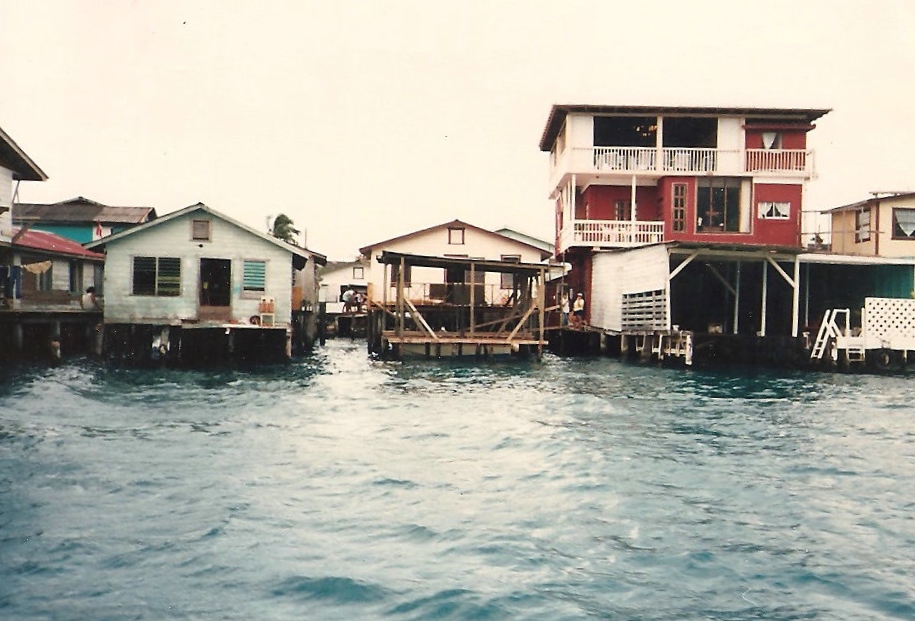
Guanaja was one of the more inhabited of the Bay Islands back in the 90’s. The central town of Bonacca was the most populated with about 10,000 residents. As the catamaran docked at a small pier near the downtown, passengers were provided their first glimpse of this poor, developing Honduran fishing village.
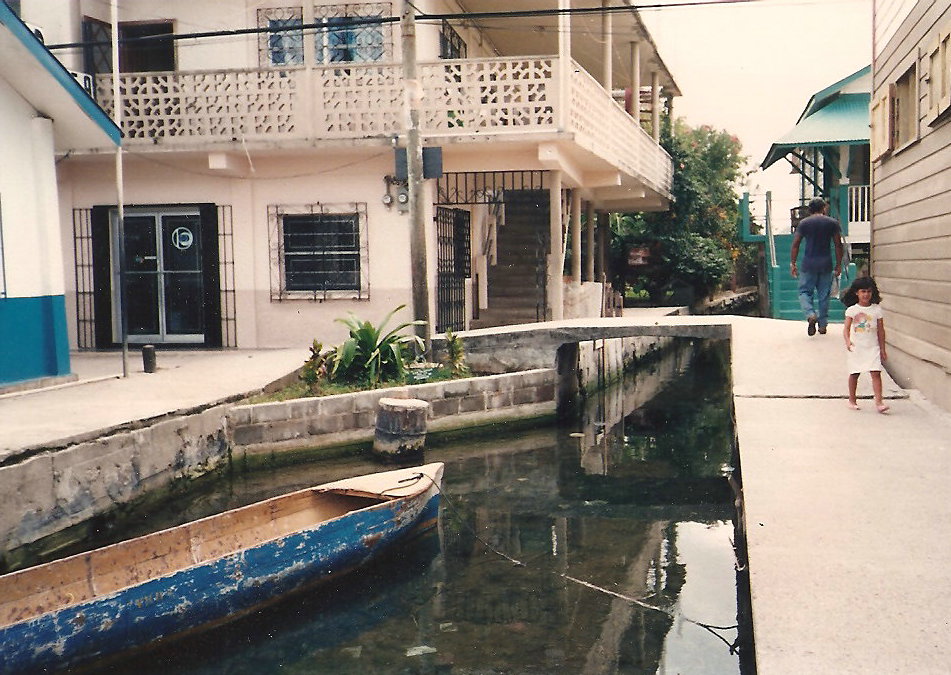
Stepping off of the tour boat, it was not difficult to see why the locals refer to Bonacca as “Little Italy”. The maze of channels, backstreets and alleys remind me of the canals of Venice. There are no roads here, so moving from one place to the next requires a lot of walking. The homes within the interior of town seem to be more upscale and roomy. I enjoyed losing myself among the walkways, stopping to watch children fishing here along the bridges.
Moving inland into the town of Bonacca, I was saddened to see areas of poverty and ruin. Refuse filled the waterways and the smell of garbage was overwhelming at times. I learned later that day that the town was undergoing renovation. The Hondurans were optimistic that these areas would be cleaned up over the next couple of years in an effort to attract more tourists. The government was hoping that this focus would lead to more visitors which would in turn improve the economy and provide local jobs. Little did I know that tourism would eventually play a large part in the future of Honduras and that major cruise lines would vie for position to include Honduras on their ship’s itineraries.
It was soon time for me to reach the pier where I would join the other passengers and we would enjoy another boat ride back to the Ocean Spirit. The ship anchored overnight which meant that divers and crew could experience the nightlife before the ship’s departure the next morning. This was always my favorite part of the day.
After the shore excursions returned and dive masters unloaded their boats after a day of diving, we would all catch a ride over to The Bayman Bay Club on Guanaja. It became our most popular spot to escape our cruise ship life and leave the passengers behind. Even if it was just for an evening, this was our special place. From here we could escape, discuss our dives and catch up with one another over a couple of games of pool.
I took great comfort each week visiting Roatan and Guanaja with its unbelievable scenery and laid back atmosphere. To us, the islands were so profound that it was hard to believe that a place like this could actually exist in a world that had become so commercialized. I remember how each of us felt so privileged to have had the opportunity to spend time in a place that felt as though we were the only ones who existed. It truly was a magical place.
Honduras will always have a special place in my heart as it was here that I passed my certification to become a diving instructor. Looking back, it is hard to believe that I had the chance to dive at one of the most amazing dive sites in the world and I look forward to an opportunity to return to experience it all over again. And of course, the day would not be complete without a few dive stories over a game of pool at Bayman Bay Club.
Have you had the opportunity to visit a location that was once your best kept secret and you had hoped it would stay that way forever? Have you visited there recently to find that things have changed yet you have fond memories of its earlier existence? I would love to hear from you if you would kindly leave a message in the comments section below. I am so thankful that you read my post about cruise life in Honduras and look forward to hearing from you. Wishing you many Happy Travels!
What to Eat:
The food from Honduras is certainly a melting pot of flavors. Influenced by the Indian culture of the Maya, Lenca and Garifuna, it is also inspired by African, Caribbean and Spanish cuisine. Here are a few dishes one should try while visiting Honduras.
- Black Bean Soup: A traditional staple, black beans are cooked with tomatoes and such spices as coriander and paprika. I love to top it off with sour cream and hot sauce.
- Horchata: A milk-based drink, this concoction includes rice, water, sugar, cinnamon and vanilla, which is absolutely delicious.
- Licuados: Another drink that comes from Honduras, this is a fruity dessert drink that is sweetened with honey and milk.
- Machuca: This spicy dish is made of mashed plantains and then smothered with a jalapeno and garlic paste.
- Pastelitos de Carne: Translated as a Meat Pie, pastry is stuffed with ground beef cooked in wine, with tomatoes, onions and raisins and cooked a golden brown.
- Traditional Baleadas: Similar to a soft taco, a tortilla is filled with beans, eggs or beef, avocado and copious amounts of cheese and usually served at breakfast or lunch.
- Yojoa Fish: Deep fried lake fish is marinated in cumin, paprika, cilantro paste and sugar, this dish is usually served with pickled onions (put on the fish) and lemon slices.
What to Read:
- Diving and Snorkeling Guide to Roatan & Honduras’ Bay Islands by Sharon Collins
- Roatan Honduras Dive Map & Reef Creatures Guide Franko Maps Laminated Fish Card by Franko Maps Ltd.
Photo Guide to Honduras:
- Copan Ruins: Stelae (stone monuments), Maya Citadel, Step Pyramids, Ruins
- Pico Bonito National Park: landscapes and scenic views
- Utila: an island off of the mainland of Honduras best for photographing whale sharks and coral reefs
- Jeannette Kawas National Park: lagoons, coral reefs tropical forests, swamps, and wetlands
- Roatan: mountains, coral reefs
- Lake Yojoa: lush landscape, birds, restaurants, coffee plantations, waterfalls and mountains
- Comayagua: Spanish colonial architecture,
Disclosure: Please refer to our blog disclaimer tab for more information.
